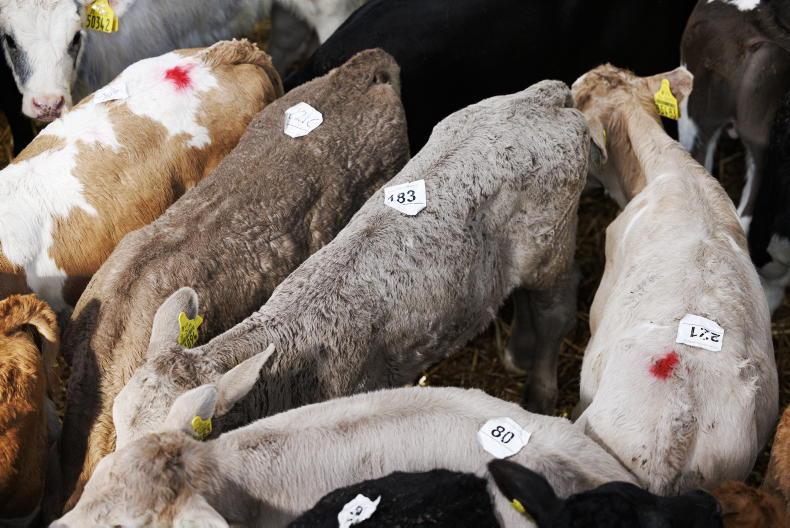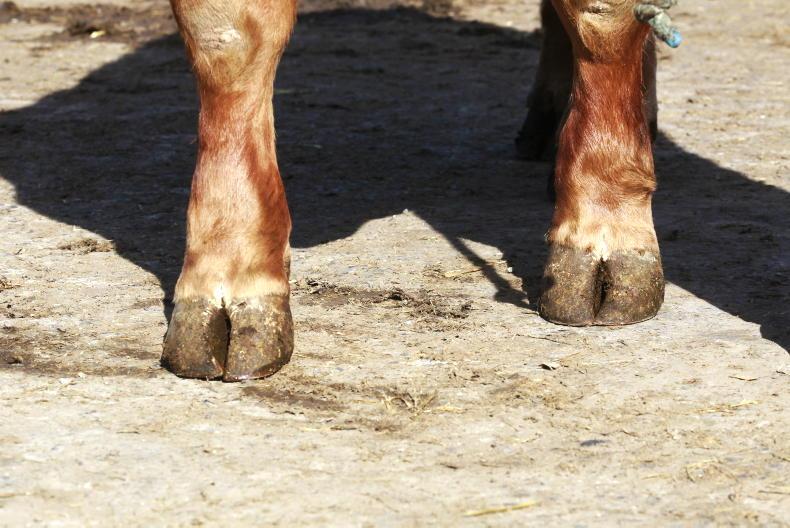Appropriate grazing of our hills and uplands will deliver many benefits to wider society, including carbon storage, preventing carbon loss, reduced fire risk, and the protection of our water supplies, a leading expert has claimed.
“The key message we have to get across as farmers is that we are delivering public goods, and we need support to deliver those goods,” Professor Jim McAdam told attendees at the second of two webinars delivered as part of the NI sheep conference 2022.
During his presentation, the former AFBI researcher said that the aim should be to keep vegetation, such as heather and rough grasses, at 15cm – 30cm.
Overgrazing and trampling can lead to peat being exposed to the sun, as well as the loss of carbon. Under-grazing might create a tall canopy, but underneath, the vegetation is not dense and there is less plant diversity. This type of vegetation poses a greater fire risk.
“Grazed heather and bog vegetation has more wildlife than ungrazed vegetation – all our research has shown that.
“We want to try to maintain a healthy, diverse plant cover, and the secret to that is grazing,” said McAdam.
He told farmers it was important to utilise sheep breeds that will actively forage across the hills and to make sure their livestock are healthy and productive, as unproductive sheep will have higher emissions per kg of output.
There is a future to look at electronic control of sheep grazing
However, there is a wide range of vegetation across the hills, so it will be necessary to be more flexible in our grazing approach, said McAdam. He would like to see the virtual grazing technology designed for cattle be extended into the sheep sector.
“Fencing is expensive. There is a future to look at electronic control of sheep grazing,” he suggested.
He is also a strong advocate of integrating some trees into a grazing system, whether it is for increased carbon sequestration, shelter for livestock, flood mitigation, extending the grazing season or increasing biodiversity. Planting native trees might also help improve soil stability and prevent erosion.
Re-wetting
McAdam was also asked about the new trend towards re-wetting peatland, and whether this could leave land more unstable.
“I don’t think so – the skill is taking the water table up to about 15cm below the ground surface. It is not about creating floods or lakes that our lambs will drown in,” he responded.
It will reduce the carbon emissions and lead us to a position where we are sequestering carbon in our peatlands
However, he acknowledged that it is not as simple as bringing in a digger to block drains, but will require some expert advice.
“It will reduce the carbon emissions and lead us to a position where we are sequestering carbon in our peatlands. It can go hand-in-hand with profitable sheep farming on the hills,” he said.
Adding more species to sheep swards
Having grown his first multi-species sward in 2018, organic beef and sheep farmer Dale Orr now has 100ac of grazing sown out in these swards across his 500ac free-draining Downpatrick farm.
Giving an update on performance at the NI sheep conference, Orr said that he originally included perennial ryegrass in the mix, only to find that the sheep refused it from mid-summer onwards, meaning swards had to either be topped or grazed with cattle.
Multi-species sward
In 2020, he decided to grow a multispecies sward without perennial ryegrass (plantain, chicory, red and white clover), and was able to regularly achieve growth rates of 350g/day in lambs.
This year, he is going to try some different species such as sheeps parsley, yarrow, burnet and birdsfoot trefoil, to see if he can enhance lamb performance further.
Read more
Livestock performance links back to the soil
Searching for answers to conundrum of costs
Appropriate grazing of our hills and uplands will deliver many benefits to wider society, including carbon storage, preventing carbon loss, reduced fire risk, and the protection of our water supplies, a leading expert has claimed.
“The key message we have to get across as farmers is that we are delivering public goods, and we need support to deliver those goods,” Professor Jim McAdam told attendees at the second of two webinars delivered as part of the NI sheep conference 2022.
During his presentation, the former AFBI researcher said that the aim should be to keep vegetation, such as heather and rough grasses, at 15cm – 30cm.
Overgrazing and trampling can lead to peat being exposed to the sun, as well as the loss of carbon. Under-grazing might create a tall canopy, but underneath, the vegetation is not dense and there is less plant diversity. This type of vegetation poses a greater fire risk.
“Grazed heather and bog vegetation has more wildlife than ungrazed vegetation – all our research has shown that.
“We want to try to maintain a healthy, diverse plant cover, and the secret to that is grazing,” said McAdam.
He told farmers it was important to utilise sheep breeds that will actively forage across the hills and to make sure their livestock are healthy and productive, as unproductive sheep will have higher emissions per kg of output.
There is a future to look at electronic control of sheep grazing
However, there is a wide range of vegetation across the hills, so it will be necessary to be more flexible in our grazing approach, said McAdam. He would like to see the virtual grazing technology designed for cattle be extended into the sheep sector.
“Fencing is expensive. There is a future to look at electronic control of sheep grazing,” he suggested.
He is also a strong advocate of integrating some trees into a grazing system, whether it is for increased carbon sequestration, shelter for livestock, flood mitigation, extending the grazing season or increasing biodiversity. Planting native trees might also help improve soil stability and prevent erosion.
Re-wetting
McAdam was also asked about the new trend towards re-wetting peatland, and whether this could leave land more unstable.
“I don’t think so – the skill is taking the water table up to about 15cm below the ground surface. It is not about creating floods or lakes that our lambs will drown in,” he responded.
It will reduce the carbon emissions and lead us to a position where we are sequestering carbon in our peatlands
However, he acknowledged that it is not as simple as bringing in a digger to block drains, but will require some expert advice.
“It will reduce the carbon emissions and lead us to a position where we are sequestering carbon in our peatlands. It can go hand-in-hand with profitable sheep farming on the hills,” he said.
Adding more species to sheep swards
Having grown his first multi-species sward in 2018, organic beef and sheep farmer Dale Orr now has 100ac of grazing sown out in these swards across his 500ac free-draining Downpatrick farm.
Giving an update on performance at the NI sheep conference, Orr said that he originally included perennial ryegrass in the mix, only to find that the sheep refused it from mid-summer onwards, meaning swards had to either be topped or grazed with cattle.
Multi-species sward
In 2020, he decided to grow a multispecies sward without perennial ryegrass (plantain, chicory, red and white clover), and was able to regularly achieve growth rates of 350g/day in lambs.
This year, he is going to try some different species such as sheeps parsley, yarrow, burnet and birdsfoot trefoil, to see if he can enhance lamb performance further.
Read more
Livestock performance links back to the soil
Searching for answers to conundrum of costs










SHARING OPTIONS